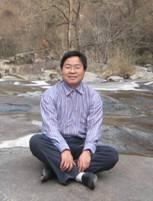-
114浏览
-
0点赞
-
0收藏
-
8分享
-
16下载
-
0评论
-
引用
期刊论文
Identification, characterization and immunological response analysis of stimulator of interferon gene (STING) from grass carp Ctenopharyngodon idella
Developmental & comparative immunology,-0001,():
Stimulator of interferon gene (STING), an important adapter responsible for RLR pathway, plays a pivotal role in both viral RNA- and DNA-triggered induction of IFNs in mammals. To understand the roles of STING in piscine immune system, STING gene (CiSTING) was identified from grass carp (Ctenopharyngodon idella). The genomic sequence of CiSTING was of 8548 base pairs (bp), including 899 bp 5′ flank region, 7 exons and 6 introns. Promoter region was predicted and promoter activity was verified. The CiSTING cDNA was of 1358 bp with an open reading frame of 1185 bp, encoding a polypeptide of 394 amino acids with a signal peptide and three transmembrane motifs in the N-terminal region. mRNA expression of CiSTING was widespread in fifteen tissues investigated, and was up-regulated by GCRV in vivo and in vitro. Meanwhile, the transcription of CiSTING was inhibited at early stage, and then up-regulated at late phase upon poly(I:C) or PGN stimulation in vitro. Interestingly, CiSTING had little impact on LPS in vitro. In CiSTING over-expression cells, CiTBK1, CiIRF3 and CiIRF7 were significantly up-regulated post GCRV or viral/bacterial PAMPs stimulation. In addition, post GCRV or PGN stimulation, the transcription of CiIFN-I was remarkably inhibited while CiMx1 was up-regulated; as for poly(I:C) stimulation, mRNA expressions of CiIFN-I and CiMx1 were inhibited at early stage while enhanced at late phrase; after LPS stimulation, both CiIFN-I and CiMx1 were inhibited. Furthermore, antiviral activity of CiSTING was manifested by the inhibition of GCRV yield. Taken together, these results demonstrated that CiSTING may be involved in board innate immune responses via the TBK1-IRF3/IRF7 cascade, responding to not only dsRNA analogue in an IFN-dependent pathway, but also virus and bacterial PAMPs in an IFN-independent pathway. This study provided novel insights into the essential role of STING in innate immunity.
【免责声明】以下全部内容由[苏建国]上传于[2014年04月01日 13时47分12秒],版权归原创者所有。本文仅代表作者本人观点,与本网站无关。本网站对文中陈述、观点判断保持中立,不对所包含内容的准确性、可靠性或完整性提供任何明示或暗示的保证。请读者仅作参考,并请自行承担全部责任。
本学者其他成果
同领域成果

 提示
提示

